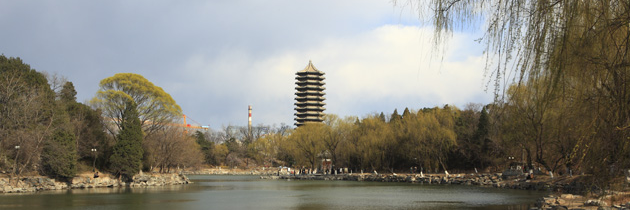
Our research area is experimental condensed matter physics. We study the electronic properties of strongly correlated materials. Systems of interest to us include high-T_c cuprates, Fe-pnictides, transition metal oxides/chalcogenides, charge and spin density wave compounds, heavy fermions, organic charge-transfer salts and 3D Dirac fermions. The behaviors of electrons in those materials and systems are usually described as “novel” and “unconventional”. The complex interplay between charge, spin, lattice as well as orbital degrees of freedom makes those materials very challenging area in condensed matter physics. The members in our group devoted much effort to the growth of single crystals of fundamental interest to the condensed matter physics community by flux and other methods. The major expertise of members in our group is to use and develop optical spectroscopy techniques to probe the electronic properties of those quantum materials.
Contribution to the development and understanding of Fe-based superconductors at the early stage: Our group, with colleagues and students then at the Institute of Physics, Chinese Academy of Sciences, confirmed the superconductivity at 26 K in F-doped LaFeAsO shortly after it was reported by Hosono’s group, did the first comprehensive study on the physical properties of the novel superconductors by performing magnto-transport and infrared measurements, and posted the first paper on FeAs based superconductors on the preprint server arXiv.org (arXiv:0803.0128, later published in PRL 101, 057007 (2008)). The work, which was highlighted in Naure Asia Materials under the title: Superconductors: Birth of the iron age, helped initiate the explosive research in this field. We, together with our theoretical colleagues, identified a spin density wave (SDW) ordered state for the parent compound and revealed a competing phenomenon between superconductivity and SDW instability based on transport, optical measurement and first principle calculations (arXiv:0803.3426, published in EPL 83, 27006 (2008)), which was subsequently confirmed by neutron scattering experiment. We promoted the superconducting transition temperature to beyond 40 K by replacing La with rare earth element Ce (arXiv:0803.3790, published in PRL 101, 057007 (2008)), which is one of the first two independent works on rare earth element substitutions. The work was highlighted in Nature China under the title: High-temperature superconductivity: Warmer than expected.. We did the first optical spectroscopy study on single crystal samples of parent compounds and revealed SDW gap formation on parts of the Fermi surfaces accompanied by rather steep reductions in both carrier scattering rate and Drude spectral weight (PRL 101, 257005 (2008)). The work provides profound experimental evidence for the itinerant origin of spin density wave order. We also did the first optical spectroscopy study on single crystal samples of superconducting compounds, identified a pairing gap formation in optical conductivity spectrum with an s-wave pairing lineshape, and revealed by spectral weight analysis the fulfillment of the Ferrell-Glover-Tinkham sum rule at low energy scale, which thus elucidates the significant difference between the Fe pnictide and high-Tc cuprate superconductors (PRL 101, 107004 (2008)).
A general description of our early contribution could be found in a report entitled "Research progresses shed light on superconductivity mechanism" in the CAS journal 《Bulletin of the Chinese Academy of Sciences》. More detailed record could be found in a Chinese article by information researchers from Wuhan Branch of National Science Library of CAS "Research progress in synthesis of Fe-based superconducting materials" published in 《科学通报》(Bulletin of Science).
